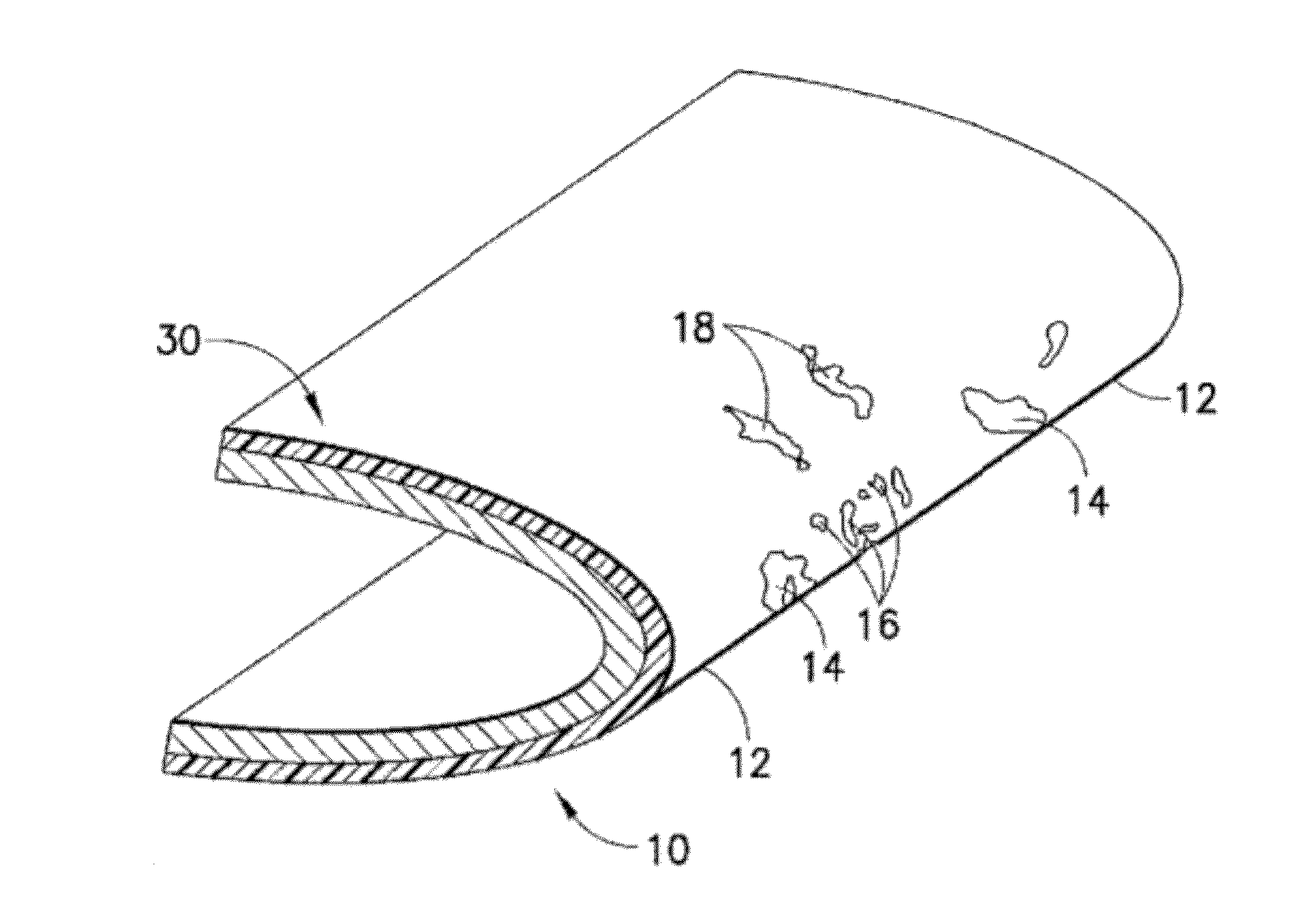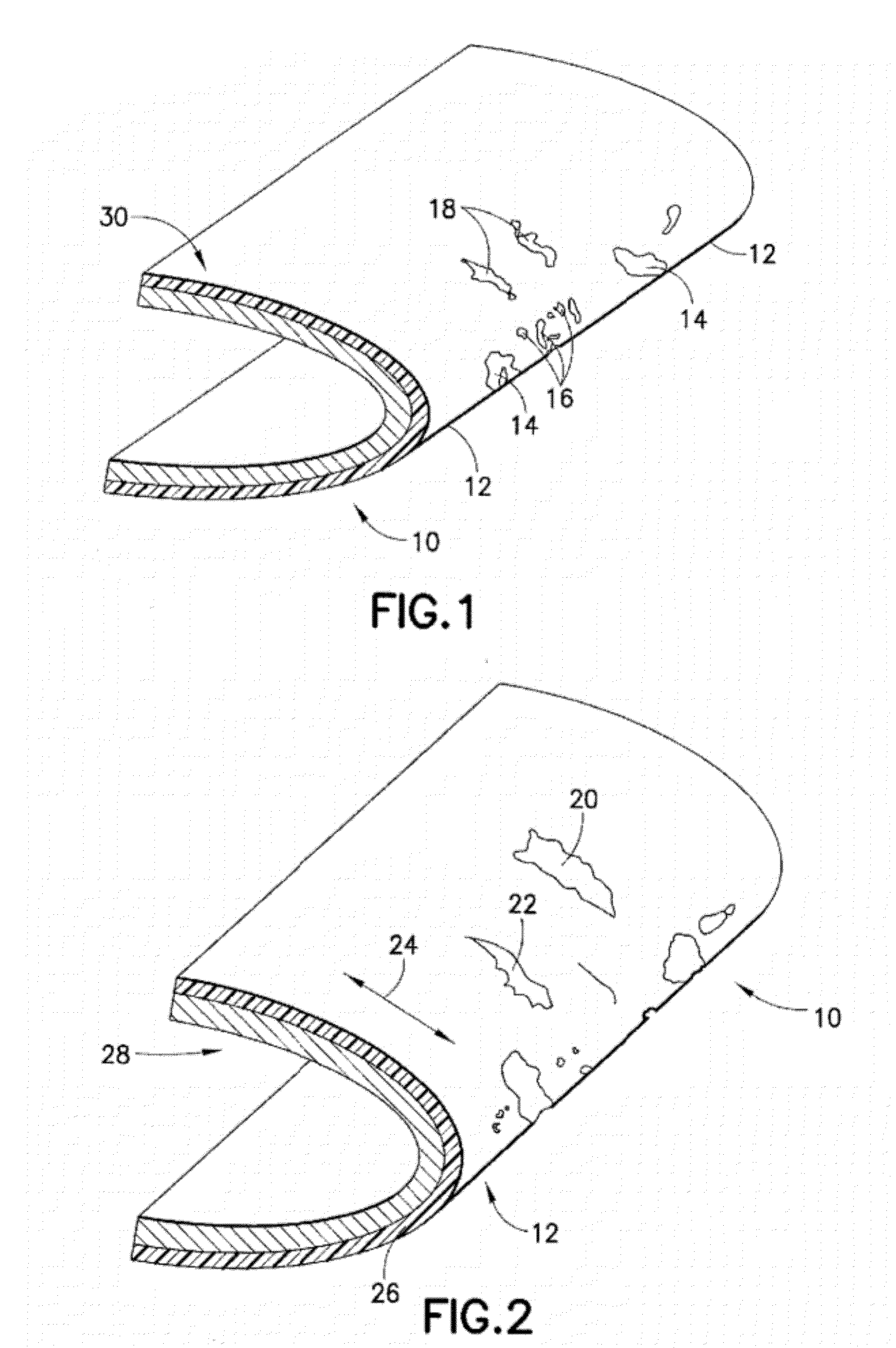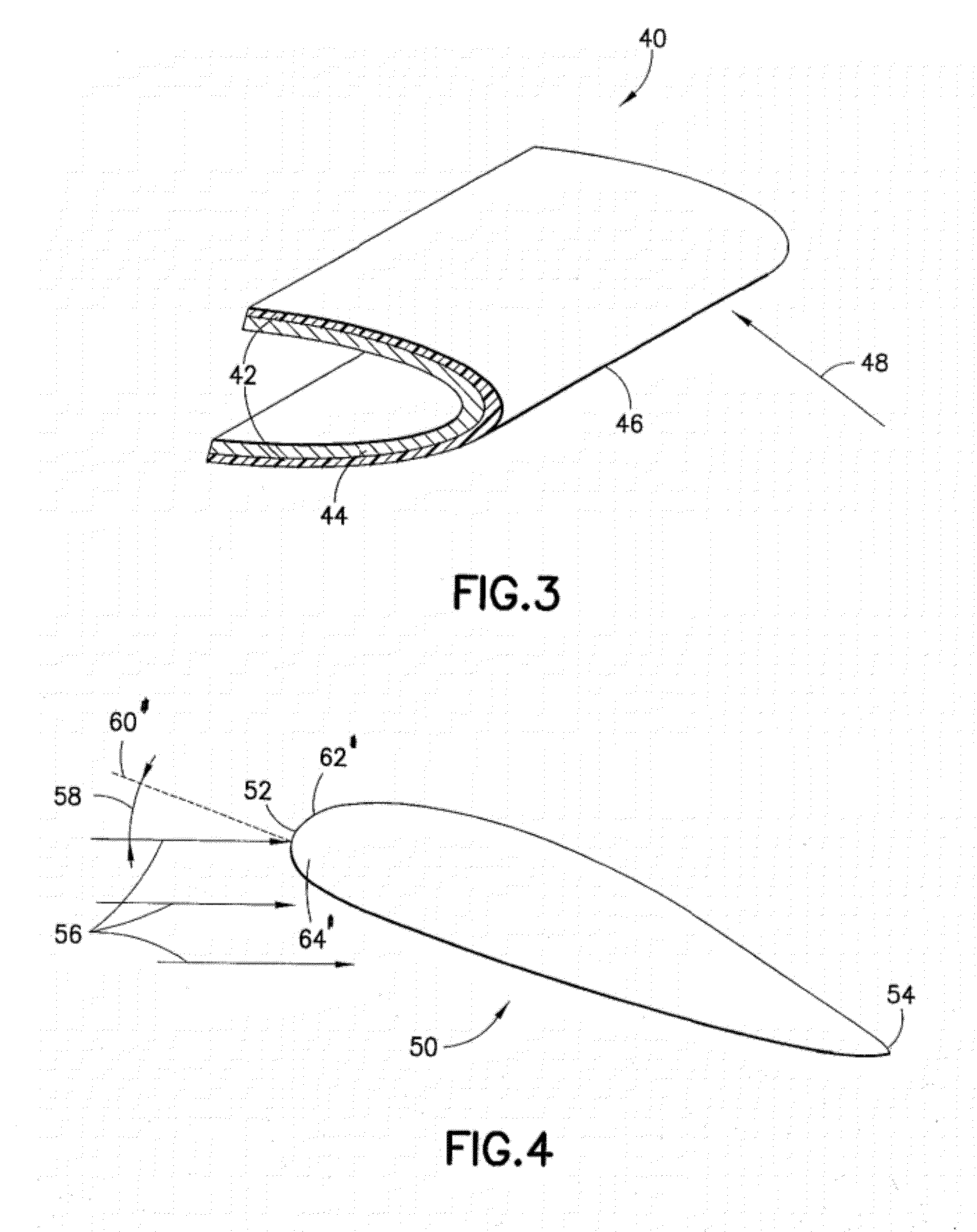Method and coating for protecting and repairing an airfoil surface
a technology for airfoil and surface, applied in the direction of liquid fuel engine components, non-positive displacement fluid engines, aircraft maintenance, etc., can solve the problems of prolonging service life, and achieve the effects of low sand erosion resistance, and high sand and rain erosion resistan
- Summary
- Abstract
- Description
- Claims
- Application Information
AI Technical Summary
Benefits of technology
Problems solved by technology
Method used
Image
Examples
example 10
The Spraying Method of Making the Tapered Multilayer Coated Airfoil Articles
[0116]The airfoil substrates to be coated are first sanded, solvent wiped, masked and then sprayed with the primer with on spraying pass or more to the desired thickness. After the recommend drying cycle of one hour, the basecoat is sprayed with multiple spraying passes to the desired thickness and taper patterns. After waiting for about 45-60 minutes, the topcoat is sprayed with multiple passes to the desired thickness and taper patterns. The coated airfoil is left to dry under the proper curing temperature (60-100° F. and relative humidity of 30%-70% to dry and cure for 5 days. The coated airfoils are ready for packaging and shipment.
example 11
The Spraying Method of Making the Preformed Multilayer Coating System
[0117]Select a release film, release coating, or release agent with suitable surface tension such that the coating and primer can deposit evenly and later release cleanly. Examples of such release film include polyethylene, polypropylene, polyester, and fluoropolymer films Suitable release coating or release agent are those that will not interfere with future adhesive bonding or non-transferrable and can be easily sanded off.
[0118]Mount the release film over the leading edge, and coating area of any suitable tooling surface which has the same three dimensional surface configuration as the airfoil for which this particular preformed article is designed, or apply the release agent or release coating over the tooling surface
[0119]In the case of a helicopter rotor, the forming surface has the same three dimensional shape as the actual rotor blade itself duplicating areas to be coated. Spray the primer to desired thickn...
##able embodiment
Hand Sandable Embodiment
[0156]To be practically repairable in the field, the new erosion protection system of this embodiment should preferably be sandable by hand in the field, on the aircraft, without the need to remove the rotor blade from the aircraft. In one preferred embodiment, the coating is made to be hand sandable on purpose. This is a significant departure from the currently employed erosion protection materials. The conventional erosion protection method strives to make the elastomeric coatings or resins as erosion resistant as possible, thus making the unfilled or lightly filled / pigmented elastomer extremely difficult to remove by sanding when repair is needed. These materials are not “hand sandable” as defined above. This embodiment discloses the opposite concept in the design of the erosion protection system. In this embodiment, additional fillers are added to decrease the sanding resistance of the basecoat on purpose, and in many applications where sand impingement i...
PUM
| Property | Measurement | Unit |
|---|---|---|
| mass weight loss | aaaaa | aaaaa |
| mass weight loss | aaaaa | aaaaa |
| diameter | aaaaa | aaaaa |
Abstract
Description
Claims
Application Information
 Login to View More
Login to View More - R&D
- Intellectual Property
- Life Sciences
- Materials
- Tech Scout
- Unparalleled Data Quality
- Higher Quality Content
- 60% Fewer Hallucinations
Browse by: Latest US Patents, China's latest patents, Technical Efficacy Thesaurus, Application Domain, Technology Topic, Popular Technical Reports.
© 2025 PatSnap. All rights reserved.Legal|Privacy policy|Modern Slavery Act Transparency Statement|Sitemap|About US| Contact US: help@patsnap.com



